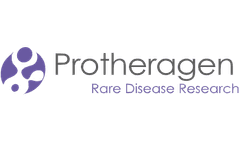Gene Editing And Therapy Articles & Analysis: Older
62 articles found
This limitation has sparked interest in utilizing gene editing to enhance T cell functionality. The Technology Behind Gene Editing The advent of CRISPR-Cas9 technology has revolutionized gene editing, offering precision and efficiency previously unattainable. ...
In recent years, adeno-associated virus (AAV) particles have emerged as a pivotal tool in the realm of gene therapy, offering researchers and clinicians innovative approaches to treat a variety of genetic disorders. ...
In recent years, messenger RNA (mRNA) technology has emerged as a revolutionary approach in the field of medicine, particularly in vaccine development and gene therapy. The ability to deliver mRNA effectively to target cells is crucial for harnessing its potential in treating a variety of diseases, including infectious diseases, cancer, and genetic disorders. This article explores the latest ...
Imagine you're a scientist, tasked with the challenge of rapidly producing large quantities of high-quality messenger RNA (mRNA) for use in cutting-edge medical treatments. Where do you even start? Well, my friend, the answer lies in the unsung heroes of the biological world: enzymes. Let me tell you a story about how these remarkable protein catalysts are transforming the future of mRNA ...
This article aims to engage in an incisive analysis of cell and gene therapies, decoding their transformative implications on human health and medical research. ...
Scientists are using a variety of gene delivery strategies to insert new genes into cells. One common biological system is viral gene delivery, where the viral vectors are modified to carry the genes and deliver them to the target cells. ...
In recent years, the field of biotechnology has seen groundbreaking advancements, with the integration of artificial intelligence (AI) into gene editing and therapy. AI-driven technologies have transformed the way we approach genetic modification and treatment, offering unprecedented opportunities for precision medicine and therapeutic ...
Drug Discovery: Observing how pharmaceuticals affect cytoskeletal integrity. ·CRISPR-Cas9 Gene Editing CRISPR-Cas9 technology has paved the way for targeted modifications in genes encoding cytoskeletal proteins. ...
Custom mRNA production has emerged as a cutting-edge technology in the field of molecular biology, offering researchers the ability to tailor-make specific messenger RNA molecules for various applications such as vaccine development, gene therapy, and regenerative medicine. This innovative process holds great promise in unlocking new possibilities in scientific ...
Nanobodies, also known as single-domain antibodies, have gained much attention in recent years due to their potential in various biomedical applications including drug delivery systems. Nanobodies are small antibody fragments derived from naturally occurring heavy-chain antibodies found in camelids, such as camels and llamas. They are composed of a single monomeric variable domain, making them ...
In recent years, the field of biotechnology has seen groundbreaking advancements, with the integration of artificial intelligence (AI) into gene editing and therapy. AI-driven technologies have transformed the way we approach genetic modification and treatment, offering unprecedented opportunities for precision medicine and therapeutic ...
What Is RNA Splicing? RNA splicing is a post-transcriptional modification process that occurs in eukaryotic cells. When a gene is transcribed, the initial RNA product is called pre-mRNA, which contains both coding regions (exons) and non-coding regions (introns). RNA splicing removes the introns from the pre-mRNA molecule and joins together the exons to form a mature mRNA molecule that can be ...
Disease relevant mutations can be recapitulated or even correct by introducing a point mutation with a single base change, or by inserting/deleting large gene sequences. These endogenous knock-in cell lines enable a clear understanding of the contribution of the gene or mutation to a phenotype. There are unlimited uses for point mutation cell lines at pre-defined ...
The quest for transformative cell and gene therapies has ignited a wave of innovation in biopharmaceuticals. As the industry races to unlock these treatments’ full potential, the intricacies of therapy development present unprecedented challenges. From navigating a highly regulated environment to ensuring streamlined workflows for quality products within tight deadlines, the journey is ...
The process of iPSC differentiation to neurons and neuronal cells is of special importance for neurobiology and related disorders, considering the dearth of clinically relevant in vitro models available for research, drug screening and development, as well as the lack of therapy to reverse neuronal damage. Benefits and advantages of iPSC differentiation to neural stem cells (NSC), neurons and ...
Polymers play an important role in the biomedical field, and polyethylene glycol (PEG) and its derivatives are among the multifunctional polymers that have attracted much attention. PEG is a synthetic macromolecule with a linear structure consisting of glycol units (-CH2CH2O-) repeatedly linked. Its unique properties give PEG a wide range of applications. PEG is soluble in organic solvents and ...
The fast-tracking landscape of contemporary gene therapy demands continuous advances in AAV (Adeno-associated virus) formulation development and the enhancement of cGMP (Current Good Manufacturing Practice) capacity. Together, these transformations are essential in producing safe and effective gene therapies for patients. AAV Formulation Development: A Primary Focus In the field of gene therapy, ...
Rare diseases, also known as orphan diseases, affect a small percentage of the population, making them particularly challenging to diagnose and treat. However, thanks to advancements in medical research and technology, significant progress has been made in the field of rare disease research, from developing accurate diagnostic tools to making effective small-molecule drugs. One of the biggest ...
In recent years, various nucleic acid-based therapies (NBT) have emerged as effective and specific activators of endogenous gene expression. Unlike gene therapy approaches supplementing gene expression, RNA-targeted therapy enhances protein production by selectively modulating cellular mechanisms mediated by endogenous RNA, such as transcription, splicing, translation, mRNA stability, and ...
Infusing Premade Products into RNA-LNP Technology The use of premade RNA-LNP products is a compelling journey towards the future of targeted gene therapy and vaccines. Instead of making the RNA-LNPs in-house, researchers and medical institutions can procure off-the-shelf, high-quality, customizable RNA-LNP products that expedite development processes and improve ...









